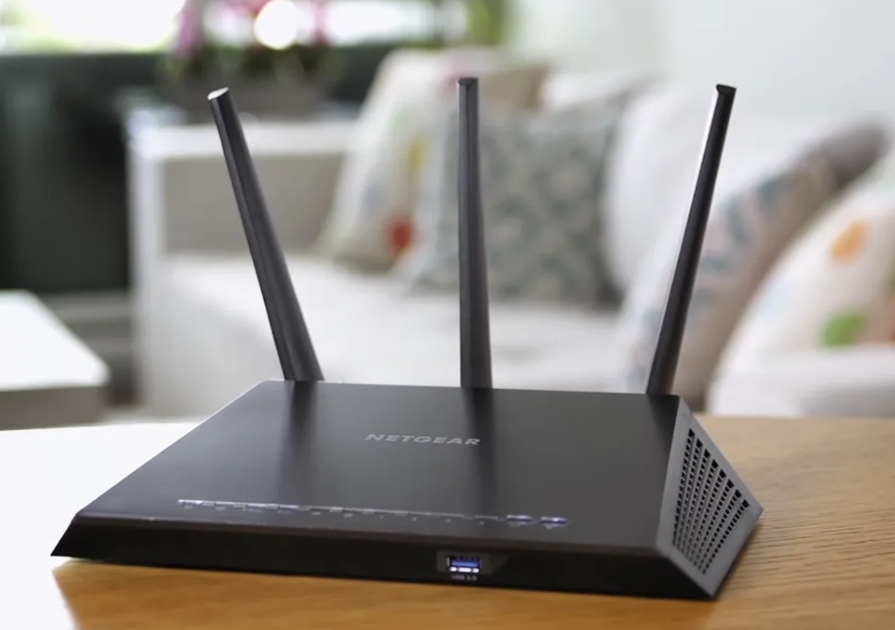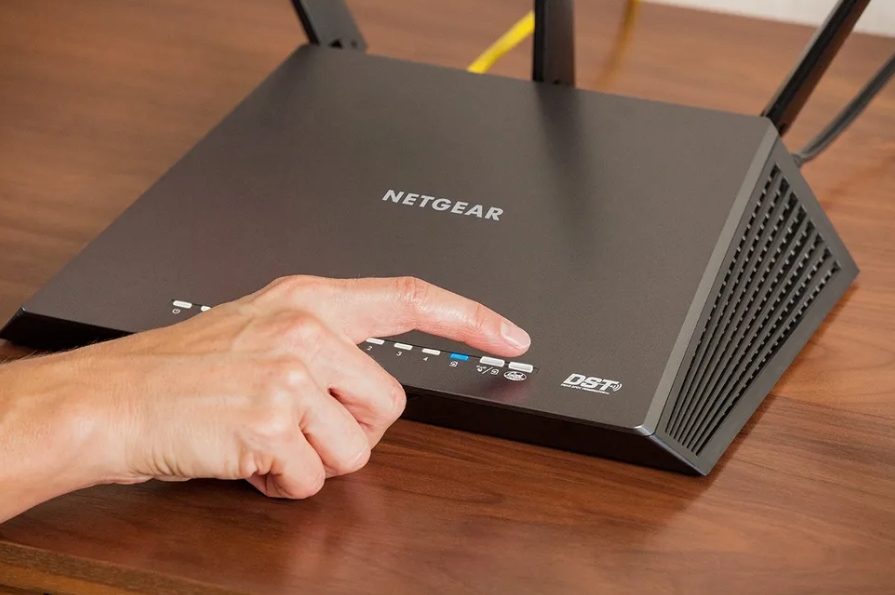
Experiencing problems with your Netgear router can be incredibly frustrating, especially when it disrupts work, gaming, or streaming. If you're asking, "why is my Netgear router not working?", identifying the root cause is crucial. Common issues include power supply failures, outdated firmware, incorrect network configurations, or ISP-related problems. This guide will walk you through essential troubleshooting steps to restore connectivity. Whether the issue stems from faulty cables, misconfigured settings, or firmware glitches, following these steps can help you diagnose and resolve router malfunctions efficiently, ensuring a smooth and stable internet connection in your home or office.

Common Causes of Netgear Router Malfunctions
Power Supply Issues
One of the most common reasons why a Netgear router stops working is an issue with the power supply. If your router isn’t turning on or has flickering lights, start by ensuring it is properly plugged into a functional power outlet. A loose power connection or a faulty power strip may disrupt the power supply, leading to intermittent performance or a complete router failure. Check the power adapter’s specifications to ensure compatibility with your router model, as using an incorrect adapter may cause voltage fluctuations. Additionally, inspect the power cable for any visible damage or frayed wires that might interfere with the connection. If you suspect the power adapter is faulty, consider replacing it with an official Netgear power supply to ensure consistent and stable power delivery, which is crucial for uninterrupted router functionality.
Firmware Outdated or Corrupted
A Netgear router relies on firmware to function properly, and outdated or corrupted firmware can cause network instability, slow speeds, or connectivity failures. Firmware updates contain bug fixes, security patches, and performance enhancements, making it essential to keep your router updated. If your router is not responding properly, check for firmware updates by logging into the Netgear admin panel through a web browser. Navigate to the Firmware Update section and see if a new version is available. Download and install the update only from Netgear’s official website to prevent potential security risks. Avoid interrupting the update process, as doing so could result in firmware corruption, leading to a malfunctioning router. Keeping your router firmware up to date ensures better performance, improved security, and a more stable internet connection for all your devices.
Network Configuration Errors
Incorrect network settings can lead to Netgear router connectivity problems. Misconfigured settings such as incorrect IP addresses, subnet masks, or DNS settings may prevent the router from communicating with your Internet Service Provider (ISP). If you’re experiencing connection dropouts, verify that your router’s network settings match your ISP’s requirements. You can do this by logging into the Netgear admin dashboard and reviewing the WAN settings. If you suspect a misconfiguration, consider resetting your router’s settings to factory defaults and re-entering the correct ISP details. Before making changes, it’s advisable to document your existing settings so you can restore them if needed. Proper network configuration ensures that your router functions smoothly, allowing connected devices to access the internet without interruptions or slowdowns.
How to Troubleshoot and Resolve Netgear Router Issues
Step 1: Verify Physical Connections
Before diving into advanced troubleshooting, start with the basics—checking all physical connections. Ensure your Netgear router is plugged into a working power source, and inspect all Ethernet cables connecting your router to the modem. A loose cable or damaged port may prevent internet access. If your router has multiple LAN ports, try switching ports to check if the issue persists. Additionally, verify that your modem is functioning correctly by connecting another device directly to it. If the modem works but the router does not, the problem likely lies within the router’s internal settings or hardware. Properly securing all physical connections ensures your router is receiving the necessary power and data transmission to function efficiently.

Step 2: Restart Your Router and Modem
Restarting your Netgear router and modem is one of the simplest yet most effective troubleshooting steps. Power cycling the devices can clear minor glitches, refresh network connections, and resolve temporary conflicts. To do this, unplug both your router and modem from the power source. Wait for 30-60 seconds before plugging them back in. Turn on the modem first, allowing it to fully re-establish its internet connection, then power on the router. Wait for all the indicator lights to stabilize before testing your internet connection. If your router is experiencing slow speeds, connectivity drops, or unresponsive behavior, a restart can restore optimal performance. Regular router reboots also help prevent overheating and keep your network running smoothly over time.
Step 3: Update Router Firmware
Keeping your Netgear router firmware up to date is crucial for maintaining stability, security, and performance. To check for firmware updates, open a web browser on a device connected to your router, then enter “http://www.routerlogin.net” or the default IP address (192.168.1.1). Log into the admin panel using your credentials and navigate to the Firmware Update section. If an update is available, follow the on-screen instructions to download and install it. Ensure that the process is not interrupted, as losing power or connection during an update may result in a corrupted installation. Regular firmware updates provide bug fixes, security improvements, and compatibility enhancements, ensuring your router runs efficiently and securely.
Step 4: Reset Router to Factory Settings
If all troubleshooting steps fail, resetting your Netgear router to factory settings may be necessary. Locate the reset button on the back of the router, usually a small hole labeled "Reset." Using a paperclip, press and hold the button for about 10 seconds until the router restarts. This process restores the default settings, erasing all custom configurations, including Wi-Fi names, passwords, and security settings. After resetting, log into the Netgear admin panel and go through the initial setup wizard to restore internet connectivity. Keep in mind that performing a reset should be a last resort, as it requires you to reconfigure all network settings from scratch. However, in cases where firmware corruption or major configuration errors are preventing the router from functioning properly, a reset can often restore full functionality.
Step 5: Reconfigure Network Settings
Once your router has been reset, you must reconfigure network settings to restore your connection. Log into the Netgear admin interface, where you will be prompted to set up SSID (Wi-Fi network name), password, security settings, and ISP details. Ensure that you use a strong password to prevent unauthorized access and select the latest Wi-Fi encryption standard (WPA3 or WPA2-PSK) for added security. If your ISP provides specific DNS settings or static IP configurations, enter those manually. Reconfiguring settings correctly ensures your router is optimized for fast and secure internet access. Once the setup is complete, restart your router to apply changes and test connectivity across your devices.
Conclusion
Dealing with Netgear router issues can be frustrating, but systematic troubleshooting helps identify and resolve most connectivity problems. If you're wondering, "why is my Netgear router not working?", start by checking physical connections, restarting the router, updating firmware, and resetting network settings if necessary. Persistent issues may require contacting Netgear support or upgrading to a new model. Regular maintenance, including firmware updates and network optimization, ensures a stable and secure connection. Following these steps will keep your Netgear router running efficiently, minimize disruptions, and improve Wi-Fi performance in your home or office.
FAQ
How do I access my Netgear router’s settings?
Access your Netgear router’s settings by entering the IP address (usually 192.168.1.1) into a web browser. Log in with your username and password, typically found on the router’s label.
What should I do if my router’s power light is blinking?
A blinking power light can indicate a firmware issue. Try rebooting the router. If the light continues blinking, perform a factory reset or update the firmware to the latest version.
Can interference from other devices affect my router’s performance?
Yes, interference from devices like microwaves and cordless phones can disrupt Wi-Fi signals. Place your router in a central, clutter-free location to minimize interference and improve performance.